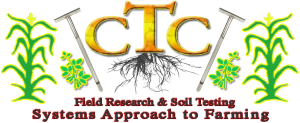[vc_row content_placement=”middle”][vc_column][vc_raw_html]JTNDaWZyYW1lJTIwc3JjJTNEJTI3aHR0cHMlM0ElMkYlMkZwb2RvbWF0aWMuY29tJTJGZW1iZWQlMkZodG1sNSUyRmVwaXNvZGUlMkY4Nzg5MTQxJTNGYXV0b3BsYXklM0R0cnVlJTI2c3F1YXJlJTNEdHJ1ZSUyNyUyMGhlaWdodCUzRCUyNzUwNCUyNyUyMHdpZHRoJTNEJTI3NTA0JTI3ZnJhbWVib3JkZXIlM0QlMjcwJTI3JTIwbWFyZ2luaGVpZ2h0JTNEJTI3MCUyNyUyMG1hcmdpbndpZHRoJTNEJTI3MCUyNyUyMHNjcm9sbGluZyUzRCUyN25vJTI3JTIwYWxsb3dmdWxsc2NyZWVuJTNFJTNDJTJGaWZyYW1lJTNF[/vc_raw_html][/vc_column][/vc_row][vc_row][vc_column][vc_column_text]In this week’s Boots In The Field Report Ken covers what a difference 350 miles makes in planting progress. He touches on the need for pest teams to be hitting the fields to spot issues before they get worse and document what happened while the evidence is still there to tell you. Ken also shares times that will most likely have high cutworm pressure and advises to be on the lookout for bean leaf beetle. He also touches on getting either an NDVI or Thermal image on fields that will have windmill damage both this year and next year to better help keep track of damages. Ken introduces the addition of a soil moisture sensor offer to both irrigation customers and those with tile gates.[/vc_column_text][/vc_column][/vc_row][vc_row][vc_column][vc_column_text]
